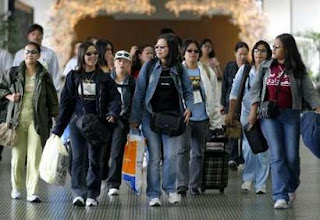Endosulfan is a neurotoxic organochlorineinsecticide of the cyclodiene family of pesticides. Being an endocrine disruptor, it is highly toxic. It is banned in the European Union,Cambodia, and several other countries, while its use is restricted in other countries, including the Philippines. It is still used extensively in many countries including the US and
Endosulfan has been used in agriculture around the world to control insect pests including whiteflys, aphids, leafhoppers, Colorado potato beetles, cabbage worms, and other pests. It has also seen use in wood preservation, home gardening, and tse-tse fly control, though it is not currently used in any vector control campaigns. The World Health Organization estimated world wide annual production to be about 20 million pounds (9,000 metric tons) in the early 1980s.mancozeb and monocrotophos, with almost 180 million pounds manufactured in the period 1999-2000. In India, more endosulfan is produced than any other pesticide except
killer pesticide endosulfan finally banned in Benin!
 After almost 10 years of environmental damage and a large number of deaths among cotton growing communities, the infamous insecticide endosulfan is finally on its way out from West Africa. On 16th February, the government of Benin, one of the 3 largest cotton producers in the region, announced that the chemical would be banned after the existing stocks are used up.
After almost 10 years of environmental damage and a large number of deaths among cotton growing communities, the infamous insecticide endosulfan is finally on its way out from West Africa. On 16th February, the government of Benin, one of the 3 largest cotton producers in the region, announced that the chemical would be banned after the existing stocks are used up. This decision comes a result of a recommendation from the region's pest management experts who have finally recognised the unacceptable hazards of endosulfan, and paves the way to a probable phase out in most West African cotton producing countries - our sources suggest that Mali, Burkina Faso and Ivory Coast are committed to phasing the insecticide out by the end of the 2008/9 growing season.
This decision comes a result of a recommendation from the region's pest management experts who have finally recognised the unacceptable hazards of endosulfan, and paves the way to a probable phase out in most West African cotton producing countries - our sources suggest that Mali, Burkina Faso and Ivory Coast are committed to phasing the insecticide out by the end of the 2008/9 growing season.










